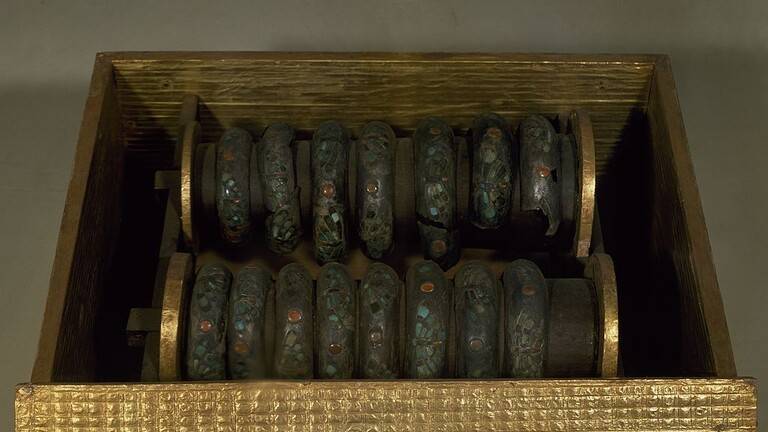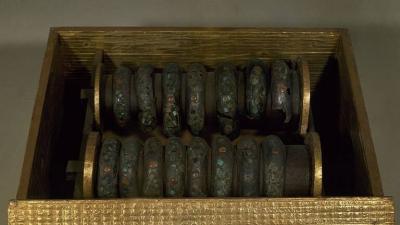Bracelets found in the tomb of the Egyptian queen Hetepheres I, the mother of Khufu, the pharaoh who ordered the construction of the Great Pyramid, revealed information about trade networks linking ancient Egypt with Greece. After analyzing samples taken from the jewelry, an international team of archaeologists discovered that the bracelets contain copper, gold, and lead.
A statement noted that there is inlay made of gemstones such as turquoise, lapis lazuli, and agate, which were common features in ancient Egyptian jewelry. However, the pieces, including one depicting a butterfly, also contain traces of silver, despite the absence of any known local sources of the precious metal in ancient Egypt around 2600 BC when the jewelry was made.
The team examined the isotopic ratios—atoms with different neutron counts—in the lead. Based on this analysis, the scientists suggested that the materials were "consistent with ores from the Cyclades," a group of Greek islands in the Aegean Sea, as well as those from Lavrio, a town in southern Greece, according to a study published in the Journal of Archaeological Science: Reports.
Lead author Karen Suada, a lecturer in the Department of History and Archaeology at Macquarie University in Sydney, stated: "The origin of the silver used in artifacts during the third millennium remained a mystery until now. This new discovery shows, for the first time, the potential geographical extent of the trade networks that ancient Egypt utilized during the peak of pyramid construction."
The scientists speculated that the silver came through the port of Byblos in Lebanon, noting that Byblos' tombs from the late fourth millennium contain several silver pieces, and that there was activity between this port and Egypt at that time. They added that the silver found on the bracelets is the first evidence of long-distance trade exchange between Egypt and Greece.
The study also provides insight into how the bracelets were made. Co-author Damian Gour explained, "The bracelets were crafted using cold-working techniques with repeated annealing (a heating process) to prevent breakage. It is also likely that the bracelets were alloyed with gold to improve their appearance and malleability during manufacturing."
Queen Hetepheres was one of the most influential queens of ancient Egypt. She was the wife of Sneferu, the first pharaoh of the Fourth Dynasty (2575–2465 BC). The researchers stated that her tomb, discovered in Giza in 1925, contained many treasures such as gilded furniture, gold vessels, and jewelry, including 20 of these bracelets. Some of the bracelets are currently part of the collection at the Museum of Fine Arts in Boston.




